Where honeysuckle grows well: conditions, varieties and regions for growing in Russia
Honeysuckle is one of the most unpretentious shrubs found everywhere in our country. The huge species diversity allows it to be used both as a garden berry and as an element of landscape design. This shrub grows up to 3-5 m in height, its slightly elongated, oval, pubescent leaves look beautiful. During flowering, it exudes a very pleasant and healthy aroma, especially in the evening. There is only one edible species, but it has many breeding varieties.
Gardeners willingly grow this shrub to obtain useful berries. At the time of harvest, honeysuckle is literally hung with blue, blue or purple fruits with a matte bloom. From one bush, you can collect up to 5 kg of berries. Where it grows in the wild and by the inhabitants of which regions it is cultivated - read on.
The content of the article
Where does honeysuckle grow in nature?
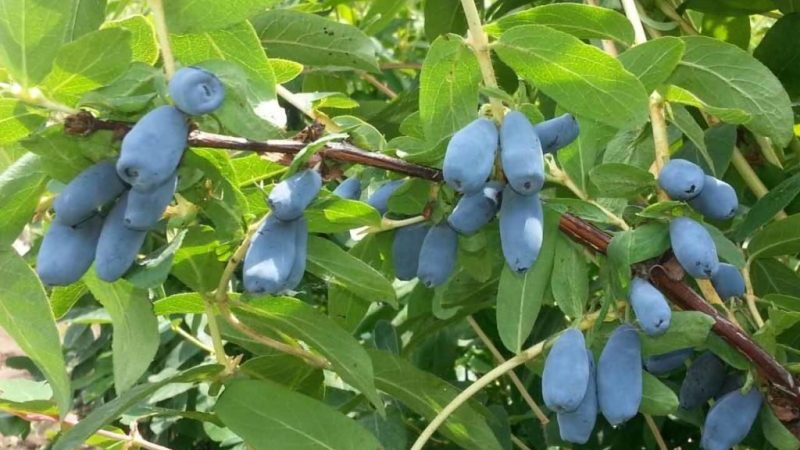
This shrub is common throughout the northern hemisphere. But most of all it is found in Southeast Asia and the Far East.
The plant is undemanding to climate, soil, the proximity of other plants. Botanists have more than 250 types of honeysuckle, but not all of them are suitable for food, there are also poisonous ones. For example, the wolfberry, well-known among the people, is also honeysuckle.
Reference. Bush leaves during the Great Patriotic War were used in the treatment of wounds and for dressings.
In which regions
Honeysuckle grows best in the northern regions of Russia, the Far East, the North Caucasus, the Urals and Kamchatka. Depending on the region of growth, shrubs differ not only in appearance, but also in the content of vitamins and minerals in the berry.
The most healthy varieties grow in Siberia and the Far East. They contain an increased content of elements that help fight the manifestations of atherosclerosis. Fresh, frozen or grated with sugar, the berry effectively lowers blood pressure. The content of vitamin C in fruits is comparable to that in lemons. Fruit drink made from ripe berries quenches thirst well.
Depending on the region of growth, the taste of berries also changes.... The farther north, the more sourness, in the southern regions it is sweeter. Not everyone loves honeysuckle for its characteristic bitterness. But it is completely not felt in the berries grated with sugar.
Honeysuckle is very useful not only for hypertension. It strengthens the immune system due to its high content of ascorbic acid and silver. The berries and leaves of the bush normalize the activity of the digestive tract.
Reference. The plant calmly tolerates frosts down to -50 ° С
In the treatment of colds, berries and leaves help to reduce temperature and sputum discharge. They are even used in the treatment of pulmonary tuberculosis.
For cores, honeysuckle is useful in that it strengthens blood vessels, cleanses them of cholesterol deposits. Berries stimulate brain activity, improve memory, relieve stress.
In what area
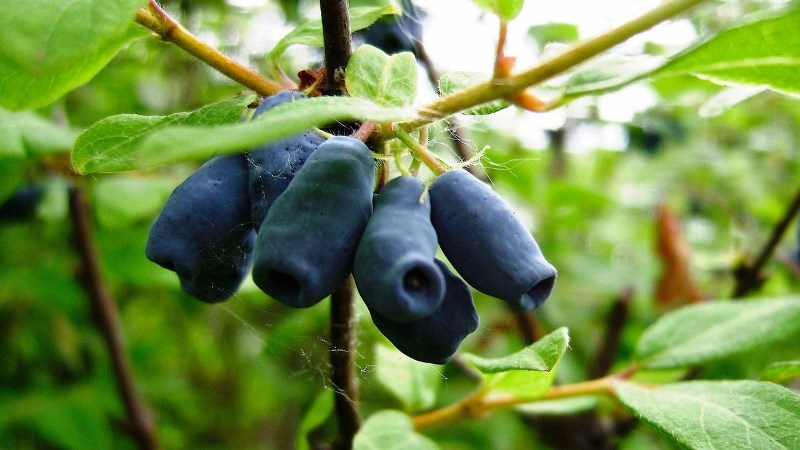
This unpretentious plant feels great in any conditions. Honeysuckle tolerates sun and partial shade well. Grows in separate groups and under trees. Even under the pylons of power lines, where the dandelion does not want to live, honeysuckle is common.
It is interesting! This plant is not found in the wild in the southern hemisphere. But restless settlers brought honeysuckle seedlings to New Zealand, and they took root there.
It grows well in wetlands and mountain slopes.In the steppe regions and on salt marshes, there are some types of edible honeysuckle, and the wolfberry grows everywhere - in the forest, city squares, on pastures.
There is a feature of honeysuckle that has not yet been confirmed by botanists, but noticed by geologists: it willingly settles where there are deposits of silver and copper. Due to the presence of these elements in the soil, berries contain many useful substances.
Traditional medicine uses honeysuckle as part of complex therapy for the treatment of many diseases. For example, with pneumonia, enteritis, diabetes, arthritis.
Read also:
Where honeysuckle grows in Russia: the most suitable regions and varieties
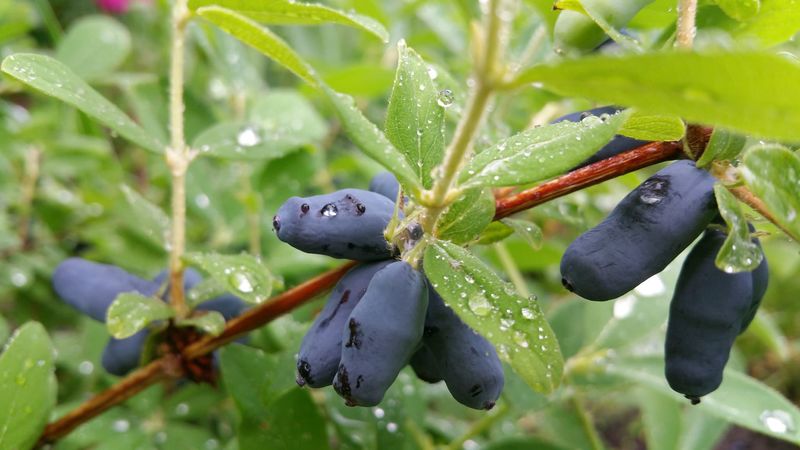
The shrub is unpretentious to care for, so gardeners are happy to grow it on their plots.... Honeysuckle is used as a wind-protecting plant, to create landscape solutions - gazebos and arches entwined with bushes look great and give coolness.
As a garden plant, zoned varieties of honeysuckle are grown everywhere - from Kaliningrad in the west of the country to the Kuriles and Kamchatka in the east, from the polar regions of Yakutia and Komi to subtropical Sochi and the high-mountainous Caucasian republics.
Reference. Honeysuckle gives not only tasty and healthy berries. For medicinal purposes, the whole bush is used - leaves, bark, flowers, roots.
The best large-fruited varieties for garden plots:
- Altair grows well in the middle lane, the berries do not crumble even after full ripening, gives up to 2 kg of harvest per bush
- Kingfisher - one of the best varieties for Siberia, up to 4 kg of large (2-3 cm long), sweet fruits are harvested from one plant;
- Leningrad giant - a very productive variety with large sugary berries for the northern regions, Siberia and the Far East;
- Silginka - for the southern regions, since it is resistant to droughts and return frosts, the berries are stored without loss of quality for a month after harvest.
The best varieties of honeysuckle for the northern regions were bred by breeders of Vladivostok and Komsomolsk-on-Amur. Since the middle of the 20th century, they have created over 100 varieties.
Most of all, honeysuckle is cultivated by the inhabitants of Siberia, the Far East and Kamchatka. This is due not only to the enormous benefits of berries, but also to the fact that it is not easy to grow many other fruit bushes in harsh conditions. And honeysuckle perfectly tolerates frosts, blooms and ripens earlier than all others. Already in June, throughout the taiga, honeysuckle berries turn blue like aquamarine spray.
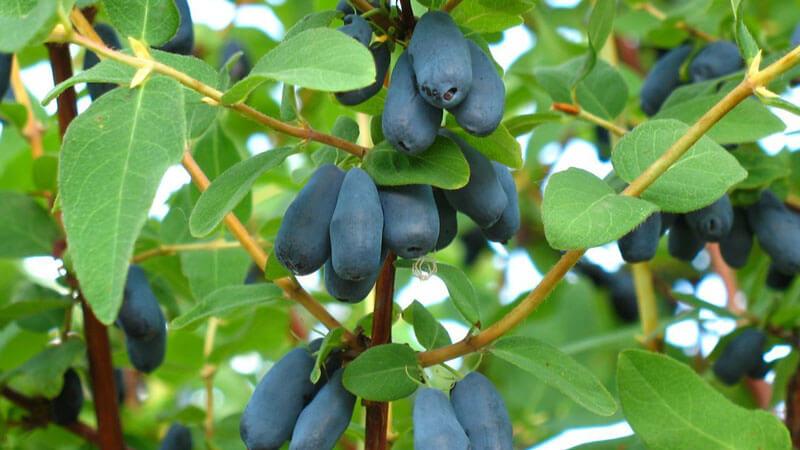
The bush tolerates a transplant from the wild to the garden plot perfectly. This is how the first cultivated honeysuckle appeared. In Europe, this shrub was used in the days of Karl Linnaeus to decorate parks and squares. True, for the sake of beautiful and dense foliage and flowers, and not for collecting harvest.
Europe only listed honeysuckle as a commercial berry in 2018. And already now there is a real boom: residents of Germany, France, England, Belgium and other countries are actively buying healthy fruits. The demand for them increased especially sharply after the death of blueberry plantations due to frost. Even Canada, the United States and Japan are listed as importers of honeysuckle.
Dwarf varieties are best suited for growing at home.... The most famous is Japanese honeysuckle. At home, the plant is grown as a bonsai, while the berry blooms and bears fruit perfectly.
Residents of Russia can freely grow this berry in any climatic conditions... And for those who do not have their own land plots, it is recommended to breed honeysuckle on the windowsill. Some low-growing varieties grow well at home and bear fruit abundantly.
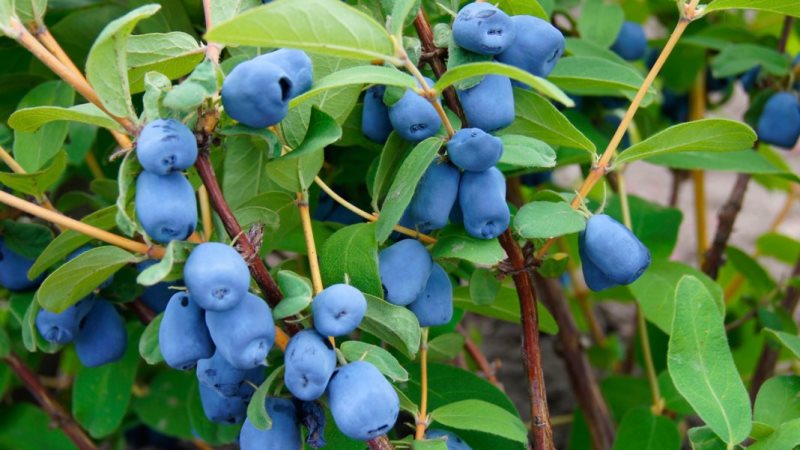
It is interesting:
Frost-resistant early-ripening variety of honeysuckle "Lakomka".
An early-ripening resistant variety of Vasyugan honeysuckle.
Conclusion
Honeysuckle is a very unpretentious plant found throughout the northern hemisphere. It grows equally well in the taiga and steppe, in the sun and in the shade of trees, in the mountains and in swamps. Only one type of honeysuckle is edible, but it has many different varieties. The tremendous benefits of berries have long been known to traditional and folk medicine. And Russian gardeners grow honeysuckle from Kamchatka to Murmansk.